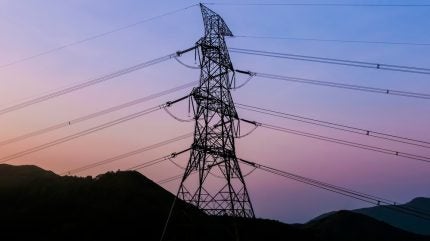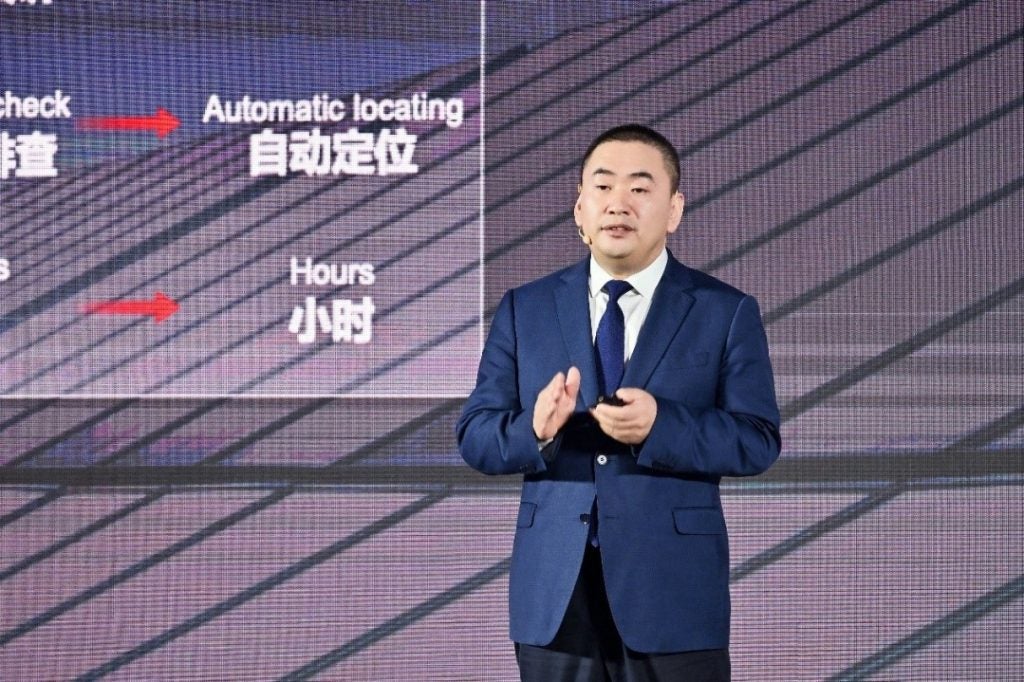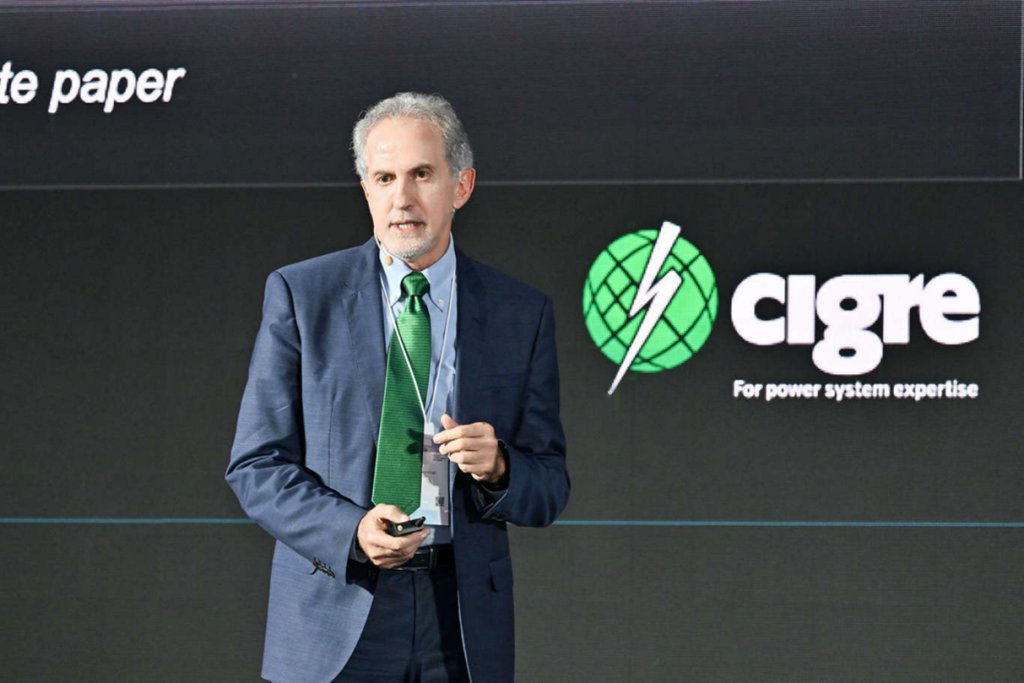
In his keynote speech at Huawei Connect 2024, Shanghai, David Sun, Vice President of Huawei and CEO of Huawei Electric Power Digitalisation Business Unit, highlighted the current challenges facing the power industry around the world. The development of renewable energy sources, managing legacy infrastructure, evolving policies, cybersecurity threats, electric vehicle provisioning and increasing customer demands, are pushing current technology to its limits, he says.

“We should be building a sustainable technical architecture to ensure that we have the means to provide solutions for global problems, namely, low voltage communication and medium voltage backup,” said Sun, speaking at the event. “The network must be secure, flexible and affordable.”
Sun outlined the need for industry solutions to improve distribution network flexibility and resilience, introducing HPLC as a key technology for secure, reliable communication networks, offering 99.9% reliability and real-time data streaming. Sun also discussed the importance of building a sustainable technical architecture to enable digital and intelligent development, including leveraging cloud, edge computing and open platforms.
Focusing on ‘three perspectives’- business, economy and technology – Sun suggests that there is a need to focus on business scenarios, economic return on investment, value-added human resources and data assets, while urging industry to move towards long-term digitalisation.
Digitalisation of the electric power sector is a transformative trend
Digitalisation is reshaping how utilities operate and manage energy resources. By leveraging technologies like cloud and AI, utilities can make more informed decisions about energy generation and distribution. For example, predictive maintenance can reduce downtime and enhance reliability while a smart grid, powered by advanced analytics and IoT devices, can enable real-time monitoring. AI can also drive improvements via weather forecasting, grid operations, distributed energy asset coordination and demand-side management.
According to analytics from GlobalData, digital technologies can save up to $1.8 trillion of grid investment globally by 2050, extending the lifetime of grids, integrating renewables and minimising supply interruptions. In 2023, the total deal value for digitalisation reached $33.3 billion, reflecting a continuous upward trend[i].
Other key trends include the integration of digital technologies across the power value chain with enhanced energy security and customer services, power grid modernisation and increased cybersecurity.
Transformation is also evident in the close collaboration between Huawei and CIGRE, an international technical organisation focused on power system information sharing.
Marcio Szechtman is the ex-Technical Council Chair of CIGRE and, after taking to the stage at Huawei Connect 2024, he sat down to discuss the major challenges facing digitalisation in the power sector, emphasising the need to focus on affordable and productive projects that have a clear return on investment.

“You need to select your projects very carefully,” Szechtman says. “The outcome of this process is to have a more efficient network. If you have a failure, to have restoration in the shortest possible time. To monitor everything on your mobile, so you don’t need to go to the field to see if something is wrong. And if you go to the site, to know exactly what you have to do, you don’t have to wait.”
Szechtman highlights the importance of predictive and protective actions using digital solutions to enhance grid efficiency, reliability and restoration capabilities: “We are still in the early stages of artificial intelligence or machine learning to predict something that is going to happen in one hour. But predictive, protective action is only possible with a very robust and efficient digital approach.”
Szechtman sees great potential in the collaboration between Huawei and CIGRE, as Huawei’s technological expertise in areas like digital applications and cybersecurity is very valuable to CIGRE’s work. He hopes to see Huawei’s participation and representation in CIGRE increase in the coming years.
Szechtman adds that electrification is a ‘no-return path’ and digital solutions are urgently needed to manage the increasing demands and intermittency of renewable energy sources on the grid. “The electrical system should be robust, resilient and reliable enough to cope with all the additional demands which are imposed upon it,” concludes Szechtman.
The challenges of network distribution
Lifei Liu is Regional Director of Europe and Middle East for Huawei Electric Power Digitalisation BU. With experience working around the world, Liu provides unique insight on current challenges within the power industry.
“In China, the business is divided by geographic area, while internationally it is divided by voltage levels – high voltage Transmission System Operators (TSOs) and low voltage Distribution System Operators (DSOs),” notes Liu. “For DSOs, the main challenge is low voltage. They provide power distribution for households and industry users over a vast region – it’s very hard to manage all of them.”
Liu highlights that the main challenge for power systems is in the distribution, especially at the low voltage level, where the networks are often ‘blind’ to power companies. He says Huawei is focusing its innovation efforts on solutions for the low voltage and middle voltage backhaul areas.
Another major challenge is commercial loss, explains Liu. DSOs assess power quality and internal operations using key performance indicators (KPIs). Small changes in value may indicate commercial loss, affecting customers and households. By calculating the difference between money spent and money received (known as the economic value) DSO can make better decisions about their power supply and efficiency. However, Huawei provides solutions like HPLC technology, which can improve user experience and reduce costs.
“In Saudi Arabia [electricity] meters use narrowband IoT technologies,” Liu says. “This means customers have to pay tariffs for the SIM card. There are around 11 million users, so the cost is very high. But in China, we use HPLC for the meter. We have the 5 in 1 Edge Computer Unit (ECU), replacing TTU, DCU, IoT gateways into one smart device, making it a district brain and realise the DIY on the cloud, and integration of communication, sensing and computing capabilities. You can save up to 50% on SIM card costs, resulting in significant cost savings.”
Huawei’s Intelligent Distribution Solution (IDS)
At the Global Electric Power Summit, part of Huawei Connect 2024, Huawei’s Executive Director of the Board and Chairman of the ICT Infrastructure Managing Board, David Wang, highlighted the importance of digital and intelligent technologies in addressing challenges in new power systems and emphasised the need for innovation. Wang said:
“Moving forward, Huawei will always uphold the principles of openness, cooperation, and mutual benefit, continue to explore practical industry scenarios and identify technologies for electric power scenarios in the production frontline.”
Huawei and ecosystem partners then jointly introduced the Intelligent Distribution Solution, which aims to enhance global electric power enterprises’ productivity and digital transformation.
Huawei’s solution, based on the “cloud-pipe-edge-pipe-device” architecture, aims to reduce line loss, improve power supply reliability, enhance user experience and ensure large-scale integration and consumption of renewables. The solution addresses 400V transparency and medium voltage backhaul in distribution network communication by creating an open and sustainable communication network.
IDS Application in Hong Kong
Hong Kong Electric (HK Electric) is one of the utilities that actively pursues the feasibility of applying IDS to its distribution system to address the challenges.
HK Electric is a privately-owned power company that has been in business since the 1890s, making it one of the oldest power companies in the world. The company serves a small territory of less than 100 square kilometres, with a customer base of slightly less than 600,000 of which over 75% are commercial customers. The challenges of Hong Kong’s high-rise buildings mean that the need for a reliable power supply is critical and HK Electric claims to have achieved a reliability of 99.999% since 1997.
The company started its journey in digital distribution automation in the 1980s, but the company is now focused on enhancing low voltage monitoring and visibility, deploying self-developed systems with sensors and AI-based analytics to detect abnormalities. HK Electric is also exploring the integration of various communication technologies, including mesh networks, to create a flexible and reliable distribution network.
Speaking at the power summit, Tony Yeung, General Manager of Transmission & Distribution of HK Electric, said that the power company was facing challenges related to customer expectations for power quality and reliability, as well as the impact of climate change and extreme weather events (such as typhoons) on its infrastructure.
However, Yeung explained that Huawei’s IDS can complement HK Electric’s existing digital automation and distribution automation initiatives, helping the company enhance reliability, improve low voltage monitoring, integrate communication technologies and drive operational efficiency – all crucial for meeting the evolving needs of its customers and the power distribution network.
Now, HK Electric is focusing on building a compact, self-contained, ruggedized new LV monitoring system with the characteristics of high processing power, high compatibility and high flexibility. The system will be an open platform co-developed by all operators and suppliers, and a communication hub with wide coverage through meshed wireless communication.
Changing mindsets
Regarding the future of power transition and technology, Marcio Szechtman expresses concern about attracting young people to the electrical power industry, as many are drawn to other sectors. He believes the next generation of ‘professionals’ – rather than just engineers – will need to be more digitally focused, working with software and AI over traditional field work.
This view is echoed by Huawei’s Lifei Liu. Field engineers often struggle to adapt to digital tools and solutions, explains Liu, as they may not have the necessary skills or knowledge to solve problems. Liu says that the ‘three perspectives’ methodology for accelerating digitalisation, which includes technology upgrades, organisational transformation and creating the right mechanisms and ecosystem, emphasises the importance of changing mindsets and transforming electrical engineers into digital talent.
Moving forward, collaboration and ecosystem partnerships are crucial for innovation and sustainable solutions as well as the power industry’s ability to tackle challenges such as renewable energy integration, evolving regulations, cybersecurity threats and increased customer demand through digital transformation.
This month, Huawei’s IDS was among a series of industrial digital and intelligent transformation solutions and flagship products introduced to attendees at GITEX GLOBAL 2024 in Dubai, United Arab Emirates. Li Peng, Corporate Senior Vice President, President of ICT Sales & Service, Huawei, remarked at the summit: “We’re combining our strengths in networking, storage, computing, cloud, and energy and working with partners to build new digital and intelligent infrastructure.”
For more information on Huawei’s Intelligent Distribution Solution (IDS) click here.
[i] GlobalData: Power Predictions 2024, January 2024

